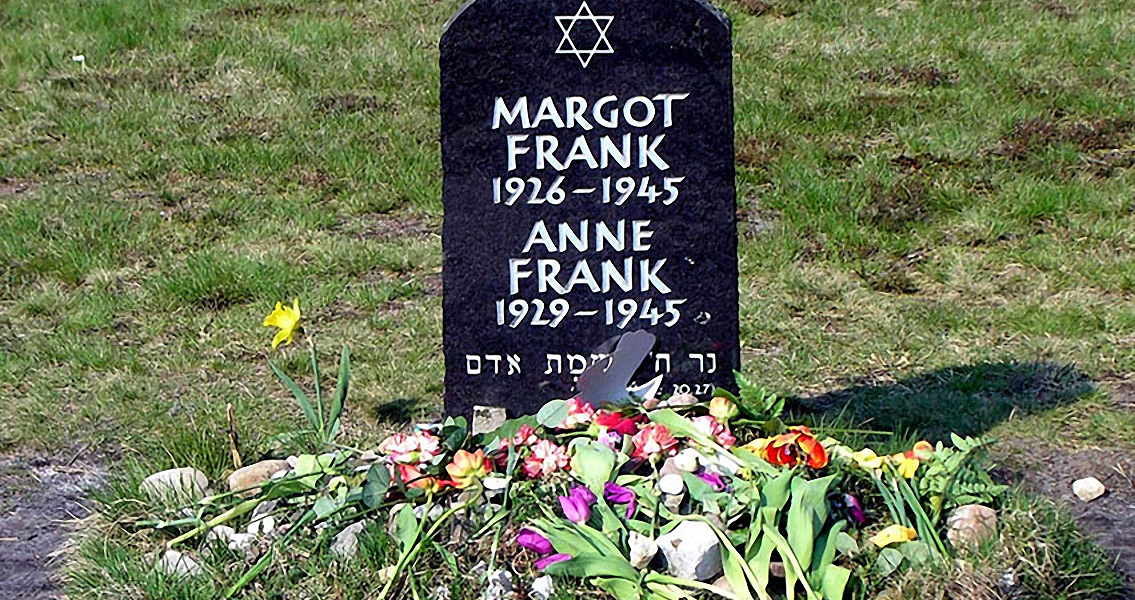<![CDATA[This March marks 70 years since the death of Anne Frank, the diarist whose writings represent some of the most poignant and detailed accounts of the the lives of Jewish civilians in Western Europe during the holocaust. Although Anne's life in Nazi occupied Amsterdam is well documented, thanks to her diary and the testimony of her father, less is known about the seven months from her family's capture in August 1944 until her death in March 1945. Indeed, it is not even possible to pinpoint the exact date that she died. Following their arrest, the Frank family were sent to Westerbork, a camp in the Netherlands, and then onto the infamous Auschwitz-Birkenau concentration camp in Poland. Anne and her sister Margot were spared death in the Auschwitz gas chambers, and were instead sent to the Bergen-Belsen camp in Northern Germany. Their mother, Edith Frank, died of starvation at Auschwitz in January 1945. Anne and Margot contracted Typhus, and died in early March. Their bodies were thrown into a mass grave, just a few weeks before the camp was liberated by British forces on 15th April. A Dutch documentary titled "The Last Seven Months of Anne Frank", originally aired in 1988, was the first to reveal details of the final months of the Frank sister's lives. The documentary's creator, Willy Lindwer, interviewed six women who had crossed paths with the Frank sisters in the last few months of their lives. From these interviews he was able to piece together a narrative of the Frank's time in both Auschwitz and Bergen-Belsen. It seems that the sisters had arrived at Westerbork in comparatively good health, but their physical decline was swift and painful. It is a story that could be retold for millions of inmates in the concentration camps across Europe, highlighting that the poor conditions for prisoners at the camps could be just as deadly as the gas chambers. In a recent interview with The Independent, Nanette Konig, a school friend of Anne Frank who also encountered her at Bergen-Belsen, described the horrible conditions of the camp and the very obvious impact they had on Frank. While Frank had been "full of life" when the two teenagers first met, the last time Konig saw her, "She was completely depleted. She had come from Auschwitz in the beginning of the November 1944 when Bergen-Belsen was in no position to receive anybody or anything. I’m surprised, because we both were skeletons, that we actually were able to recognise one another, and our meeting eventually was very emotional." Otto Frank, Anne's father, was the only member of the family to survive the horrors of the holocaust. When he returned to Amsterdam, following the Soviet liberation of Auschwitz and the end of the Second World War, he was handed a copy of his daughter's diary by Miep Gies, a Dutch woman who had helped the family hide before their capture by the Gestapo. The diaries were first published in 1947, and have since been read by millions of people worldwide. Anne Frank's Diary stands out as one of the most important works of literature from the twentieth century, a first hand depiction of a teenage girl's life as she lived through the unimaginable. The book combined with the details we have of the last seven months of her life provide a very human connection to the tragedy of the holocaust, an event that is often remembered in terrible statistics rather than the personal stories of its victims. Image courtesy of Wikimedia commons user: J. Tajchert]]>
70 Years Since the Death of Anne Frank
